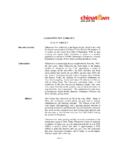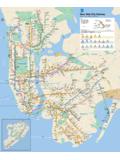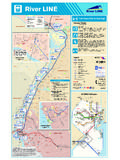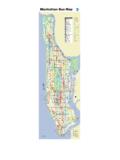Transcription of New York City Mobility Report - City of New York
1 1 New york CityMobility ReportOctober 2016 NYC Department of Transportation232 Cover: Third Ave. at 57th St., ManhattanThis page: 86th St. at Central Park West, Manhattan23 7 Letter from the Commissioner 14 Manhattan Traffic S 21 Project Indicators 5 Letter from the Commissioner 7 Executive Summary 10 Mobility in Context 12 Recent Travel Trends 16 Citywide Bus Speeds 20 Citi Bike & Taxis in Midtown 22 Manhattan CBD & Midtown Travel Speeds 25 Appendices Traf fic & Transit Trends Related Reports Methodology List of Abbreviations / Credits Appendix 44 Traffic and Transit Trends 46 Methodology for Crash DataContents 454 Queens Blvd.
2 , Queens45 Dear New york city Council Members and Fellow New Yorkers:Our city has never in its history had this many residents, this many jobs, and this many visitors. In the last five years alone, we added as many jobs as we had added in the previous thirty years. This means that New york city has never had to move as many people and goods as it has to today. Our vibrancy is something to be celebrated and examined. How did we get to this position? And how will we maintain and sustain it? This NYC Mobility Report seeks to provide New Yorkers the context of where we have been, where we are now, and the challenges we face as we chart our city s course in the 21st Century. We are currently providing a historic level of Mobility due to wise decisions to invest in high performance modes beginning with the reinvestment in our mass transit system that began in the 1980s, and continuing today through NYCDOT s management of our streets to support travel by bus, on foot or by bicycle.
3 However, now that we are bigger than ever, the challenges we face are becoming more and more apparent: subways and commuter trains crushed with passengers at peak periods; bus ridership declining, in part due to worsening congestion; and people and deliveries delayed by excessively slow moving traffic in many areas of the city . Together, we must now decide whether we will continue to support a vibrant and growing city by building on the lessons and wise choices of the past. In order to better understand this context, this NYC Mobility Report presents data on the primary drivers of transportation demand in New york city population, tourism, employment side-by-side with transportation indicators related to vehicle use and transit ridership dating back to 1910.
4 By examining these trends together, we can see what was happening in transportation when our city was thriving and when it was in decline. We also utilize new technology and data sources to better understand and manage our streets today. This Report , for example, analyzes data from the GPS in every yellow taxi circulating in Manhattan to help us understand changing travel speeds in midtown, as well as new data from MTA Bus Time in order to view citywide bus speeds. And for the first time, we compare the nature of taxi trips in Midtown with those via our bike share system, Citi Bike including surprising findings about the average speed and distance of those trips. While we have never been this big, traffic in our core has probably never been this slow.
5 However, transportation is not an end in and of itself; NYCDOT seeks to provide Mobility to support the lives and livelihoods of all our citizens, regardless of where they re going and how they get around. It has been an honor to support the economic vitality and quality of life of the greatest city in the world and I am looking forward to working with you to make it even greater. Sincerely,Polly TrottenbergfeLetter from the Commissioner 67 Lexington Ave. at Grand Central Terminal,Manhattan67 Putting Change In ContextMore than six years out from the last recession, the trend is clear: New york city has grown dramatically and its growth has been served by high performance modes like mass transit, walking and cycling, not by increasing traffic volumes on roads and bridges.
6 Incredibly, New york city added more than 500,000 jobs between 2010 and 2015 more jobs than the city added in the prior 30 years (1980 to 2010). In the following pages, we present key indicators of our city s vibrancy and how NYCDOT is supporting it. Below are some of the city s more significant changes, with comparative data to provide scale and context. Executive SummaryIn 2015, there were: 45,000 fewer vehicles entering the ManhattanCentral Business District per weekday than in 2010159 million more annual subway trips than in 2010520,000 jobs added since 201046 million fewer annual New york city Transit bus trips than in 2010370,000 more New york city residents since 2010 10 million more tourists than in 2010A reduction greater than the total number of vehicles crossing the Manhattan Bridge into the CBD each dayAn addition exceeding the annual total of all trips on San Francisco s BART systemAn addition equivalent to all the tourists that visited New OrleansAn increase nearly equivalent to the total number of daily cycling trips in ChicagoThe equivalent of absorbing the entire labor force of the State of Montana These new New Yorkers alone exceed the population of Tampa, FLA reduction greater than the annual ridership of the bus system serving San Antonio200.
7 000 more daily cycling trips than in 201089 NYCDOT has served this growth and vitality by: Improving quality of life for city residents through comprehensive street redesign projects that have improved pedestrian access to transit, as well as street safety and efficiency. Expanding the city s bicycle lane network and implementing North America s largest bike sharing system, Citi Bike. Launching Select Bus Service routes throughout the city , reducing travel times and enhancing bus service in New york city . Utilizing new technology to implement real-time traffic management to better manage vehicular flow in congested areas of the city , such as the Midtown in Motion system in Manhattan.
8 However, the downside to our increasing population, employment, and tourism is that congestion has worsened and bus ridership has declined. Traffic speeds in Manhattan south of 60th Street have fallen 12% between 2010 and 2015 while average bus speeds citywide have fallen by 2%. These trends highlight the fact that, in order to keep the city growing, we must continue to invest in the most efficient ways to keep it moving. This Report looks at new technologies and new data to inform our approaches. MTA Bus Time now provides a rich GPS data source that can help us develop plans that will keep buses moving amidst significant congestion. For the first time in this Report , we map citywide congestion using Bus Time data as a proxy, providing new insights about travel speeds throughout the five boroughs.
9 The analysis shows that average bus speeds are frequently over 10 mph on arterial roads between neighborhoods, but slowest in central business districts like Midtown Manhattan, Downtown Brooklyn, and Jamaica Queens where speeds are often 4 mph or less. We also provide an examination of five individual bus routes utilizing Bus Time to show how average travel speeds can vary by more than 10 mph from one segment to another along the same bus route, helping us pinpoint where problems are most the Midtown Core, where congestion is most severe, average travel speeds in 2015 were 37% (over 3 mph) slower than in Manhattan south of 60th Street as a whole. To begin a discussion of how we are traveling now and how we could travel as population and densities increase, we place taxi trip and Citi Bike trip information side by side.
10 We learn that in Midtown, a large portion of taxi trips are short distances and that comparable trips by Citi Bike are generally faster, and always less expensive. For example, average trips between miles are more than 5 minutes faster and $10 cheaper by Citi Bike than hope is that by providing a broad but comprehensive picture of where our city has been and how it has gotten to where it is today, we can all chart our course for continued success and vibrancy in the 21st Century.* See the Methodology appendix for statistic keep the city growing, we must continue to invest in the most efficient ways to keep it Street, Manhattan1011 Mobility in ContextNew york city is currently hosting the highest number of residents, jobs, and tourists in its history.















